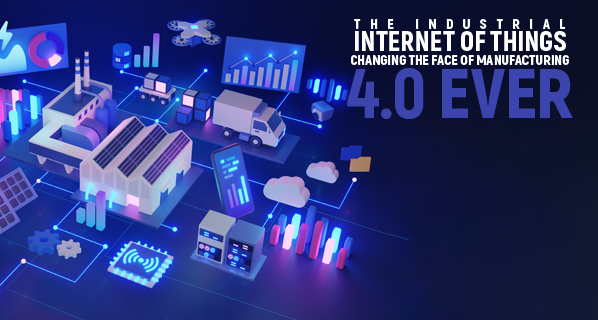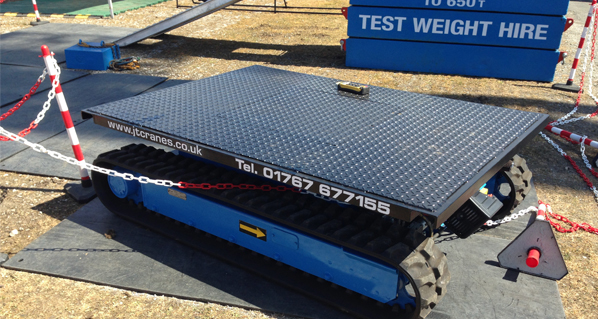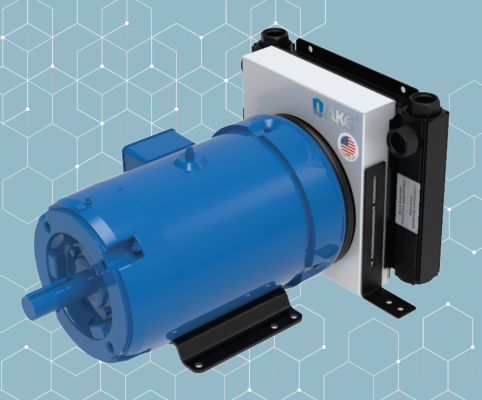The Industrial Internet of Things Changing the Face of Manufacturing 4.0 Ever

 By Marlon Schwank, Industry 4.0 Expert,
By Marlon Schwank, Industry 4.0 Expert,
Industrial Systems Division Europe.
In 1712 Thomas Newcomen invented the first effective steam engine to pump water from working mines and keep them productive. This invention was possibly the first example of an industrial maintenance system and heralded the birth of the first Industrial Revolution.
Three hundred and ten years later there can be no doubt that whatever you manufacture, whatever business sector you operate in, industrial manufacturing is now firmly in the midst of a fourth great industrial revolution.
As history shows the three previous industrial revolutions were characterized by progressive evolutions. First came mechanical production relying on water and steam power, this evolved to mass production using electrical energy, which was followed by automated production using digitized electronics.
The fourth revolution builds on this last evolution and is evolving at an exponential rather than a linear pace. It encompasses three technological trends: connectivity, intelligence, and automation, and uses breakthroughs in digital technology to create cyber-physical systems (CPSs) capable of communicating with one another and making autonomous, decentralized decisions.
It is this unique ability to record and think in real-time that is increasing industrial efficiency, productivity, safety, and transparency in a whole range of manufacturing processes.
Interconnectivity is enabling process optimization and previously unachievable functionality in manufacturing and is commonly known as Industry 4.0 or the Industrial Internet of Things; it is changing the face of industrial manufacturing forever.
Delivering Data-Driven Decisions
So, what does the Industrial Internet of Things mean for the future of manufacturing, and how does it work?
Industry 4.0 requires components and equipment that work on the plant floor, including autonomous robotics, to be embedded with sensors and internet connectivity that enable manufacturers, contractors, and machine builders to continuously collect data and analyze it.
This data can be utilized to improve factory operations, track equipment performance, predict maintenance, and reduce machine downtime. For example, consider the task of scheduling maintenance on a critical hydraulic component in a robotic arm or factory machine. The decisions that need to be taken about stopping the system, interrupting operations, and performing the necessary maintenance depend on several factors.
What is the production schedule? Is there planned downtime coming up? How much will it cost to replace it? What is the loss of performance cost compared to the cost of replacement? How long will the machine be down? If a worn component doesn’t get changed, how will that affect performance or safety?
Understanding the answers to these questions is central to making better decisions. But just as important is collecting and analyzing the right data in a way that delivers actionable insights about the machine itself.
Monitoring Manufacturing Machinery
As machine builders and suppliers face increasing commercial pressure to be able to control and maintain many different systems and devices more effectively (particularly for maintenance schedules), smart components – products with built-in diagnostics and communications interfaces – are becoming commonplace. With the right equipment installed, diagnostic times for machinery can be reduced by as much as 70%.
An example of this is, in the past, a clogged filter could cause downtime and require on-site intervention; today, the filter element can trigger an alert that it needs to be changed, allowing operations to be maintained. In some cases, using smart components removes the need for human controllers to monitor systems physically.
With remote access to monitor and update machinery, controllers can safeguard uptime and help swiftly resolve any technical problems without being present. Real-time key machine data such as temperature, pressure/torque, flow, current, and voltage can be quickly and securely transmitted and analyzed whenever defined performance parameters are not met. This customized data can give recommendations to business operations on how to maximize performance and longevity.
How Manufacturing Benefits From Industry 4.0
Machinery fitted with Industry 4.0 compatible components can benefit from:
Maintenance Data Insights – This allows maintenance recommendations – based on machine utilization or health status – to be scheduled before equipment failure.
Remote Diagnostics & Programming – This provides detailed information regarding equipment failure without having to physically inspect the equipment. It doesn’t require a technician to visit the site initially, but when they do complete the maintenance task, it ensures they have the right tools and parts on the first trip; consequently, reducing downtime, labor, and travel costs.
Location and Tracking – This records where, when, and how long every machine is used. It allows alerts to be set if a piece of factory equipment goes past a set boundary to prevent unplanned downtime.
Automated Reports – This allows the generation of customized reports with specific intervals to understand key factory KPIs and performance.
Machine Utilization and Usage – This checks operation efficiency in real-time, and monitors key parameters including machine health, equipment efficiency, and OEE.
Frequency and Duration Use – This function records and advises how often and for how long each factory machine is used. It can help with the effective allocation of equipment resources as well as managing warranty agreements.
Knowledge: The Key To Profitable Production
Industry 4.0, digital transformation, and interconnectivity are critical to the future profitability of the manufacturing industry. These technologies revolutionize the way the industry operates.
Compatible motion and control products create customer value via uptime and productivity gains by fully leveraging the analytical capabilities of IoT. Investment in Industry 4.0, especially in the industrial equipment industry, provides access to unprecedented amounts of data that can provide insights into operations that give businesses a competitive advantage. Which in turn leads to increased profitability. Experience has shown that investing in an IoT solution is financially beneficial within the first two years. Understanding the current state of an asset, along with the repercussions of any possible actions needed to be taken, allows the costs and benefits of decisions to be evaluated before they are made, helping to determine the best strategy to increase productivity and, as a result, profitability.
Utilizing Industry 4.0 To Innovate and Strengthen Customer Loyalty
When it comes to OEMs and factory machine builders, Industry 4.0 can provide some unique and unexpected benefits. By leveraging data from Industrial IoT solutions from a component supplier like Parker, OEMs and machine builders can not only improve their engineering and design concepts but also create different equipment which requires less simulation and modeling in the design stage.
The ability to do this helps drive innovation and create new opportunities for manufacturers. It also encourages better business relationships and forges stronger customer loyalty for the supplier. By using real-time data from existing infrastructure, the options that this provides for finding new designs or even new uses for equipment can lead to the opening of new markets and the implementation of new product lines for OEMs and equipment builders. This is a huge advantage for OEMs and equipment builders who want to stay ahead of the competition and increase profitability.
OEMs and equipment builders should realize that smart and connected systems can also help their customers reduce costs, increase productivity, and reduce downtime. Industrial IoT solutions, such as asset health monitoring and automated hydraulic systems, like those provided by motion and control experts Parker, not only add value for OEM customers but also increase brand loyalty to the supplier. Particularly if competitor offerings are not integrated with an IoT solution. With a customer-centric IoT solution, specific OEM requirements can be met that result in improved cost savings through better production efficiencies and the ability to generate revenues through better throughput from lines and production quality.
Reducing Factory Floor Management Costs
The use of cutting-edge Industrial IoT solutions is also changing the face of factory floor maintenance. Maintenance managers can now receive real-time data into the mechanical health and utilization of expensive assets that includes data determining machine health, equipment efficiency, downtime costs, OEE, and other contributors to factory floor management costs. This capability allows managers to take a proactive approach to maintenance and make equipment repairs before a breakdown happens, thereby avoiding lost revenue.
Industrial IoT solutions are also helping maintenance managers understand their cost contributors and efficiency factors more accurately. Being able to track equipment use down to the minute and monitor related events such as efficiency and maintenance helps to better calculate costs, plan maintenance, and reduce unplanned downtime.
A Safe Path To Operational Improvements
There are many improvements that Industry 4.0 provides that are not always obvious at first glance. Safety is one area. Improvements here go a long way in reducing the risk of unplanned downtime for both operators and managers. It works like this. Using the data collected, coaching opportunities can be tailored for operators not following company-established rules for job-site behavior, such as equipment operating procedures and maintenance schedules. Another area where Industry 4.0 can improve operational procedures on-site is by enabling senior technicians, who are not on shift, to help debug any issues that cannot be handled by junior technicians on duty. Some other additional monitoring and alerts that Industry 4.0 can provide include:
Productivity Gains
Monitors operating parameters, analyses, and determines status to forecast performance and failure.
Monitoring Key Operational Parameters
Reduces the risk of machinery being operated inefficiently.
Improve Operational Efficiency
Issues alerts and alarms based on factory operations boundary conditions.
Reduce Downtime
By predicting failures before they happen.
Investment in Industry 4.0 technology becomes incredibly worthwhile when considering the cost of an IoT solution versus the cost per unplanned downtime. By using monitoring technology, businesses can improve operational efficiency, reduce downtime, and get productivity gains. Some improvements and reductions Industry 4.0 can provide include.
- Up to 30% Boost in Productivity
- Up to 28% Reduction in
Machine Downtime - Up to 47% Improvement
in Operational Efficiency - Up to 28% Reduction in
Unplanned Downtime - Industry 4.0 and Sustainability
Operating a sustainable business has never been as important as it is now. Protecting the environment is paramount but running an environmentally friendly business can be difficult and very expensive, especially with inefficient equipment. Industrial IoT solutions positively impact the environment by providing data that helps businesses to reduce emissions caused by overuse of factory equipment.
By maximizing factory floor machine usage and improving efficiency, fuel, and resource usage along with emissions released can all be reduced. And, although machine usage is reduced overall, thanks to the efficiencies and best practices created from the use of smart components, productivity is improved, and raw material usage is reduced. In a nutshell, Industry 4.0 solutions contribute positively to sustainability by reducing equipment, resource, and material usage which all add up to a reduced carbon footprint. The completely paperless documentation due to digital twins is also a central sustainability topic and a current goal for Parker.
Creating the Perfect Industry 4.0 System
Building an IoT platform in-house can be costly for an OEM or machine builder and usually requires years of development. By far the best way of doing it is to go to a recognized leader in hydraulic motion and control like Parker and work directly with them. Not only will you benefit from the comprehensive technology integration and data analytic expertise they possess, but a comprehensive portfolio of smart and connected solutions will enable highly secure, scalable, and data-driven approaches to be developed for your business. This way you can ensure your business gets an integrated solution of smart and connected devices, controllers, and PLCs on the factory floor plus the robust software required to run it, all in one seamless digital ecosystem.








I just read your article and I found it very enlightening and informative. Thank you for sharing such valuable insights. I would also like to extend an invitation to you to visit my website Perangkat IoT and we can collaborate with each other.
warm regard.